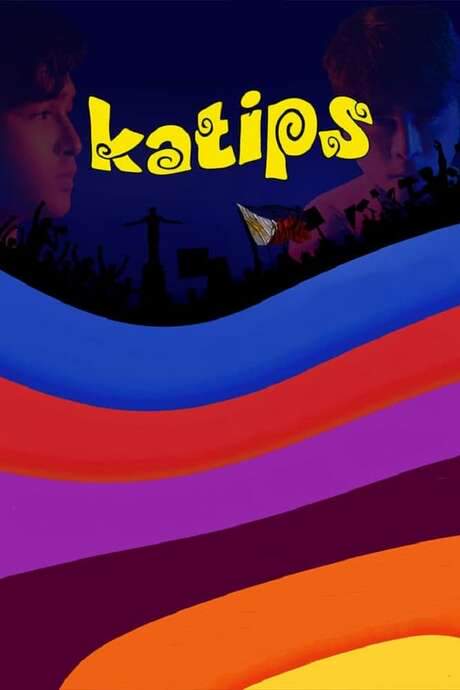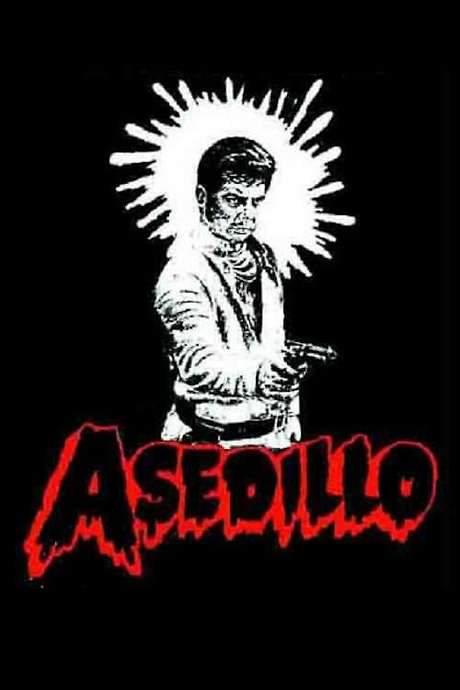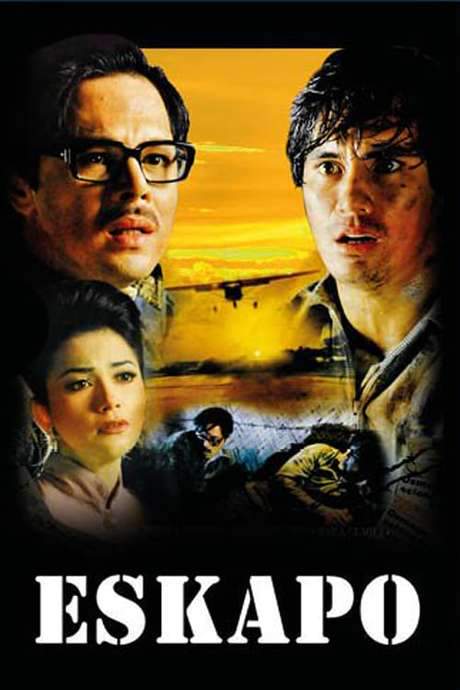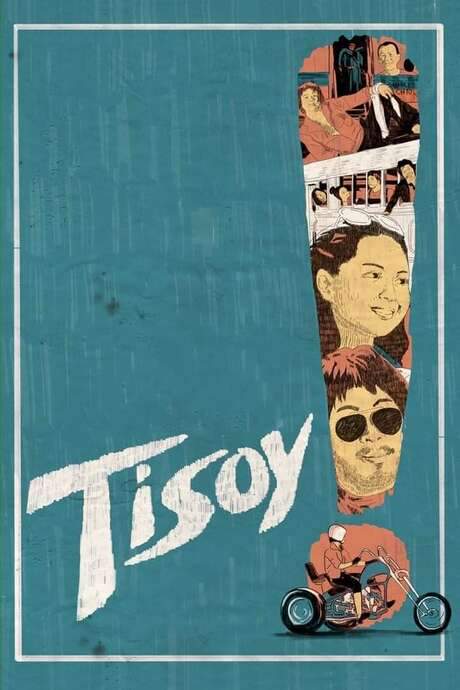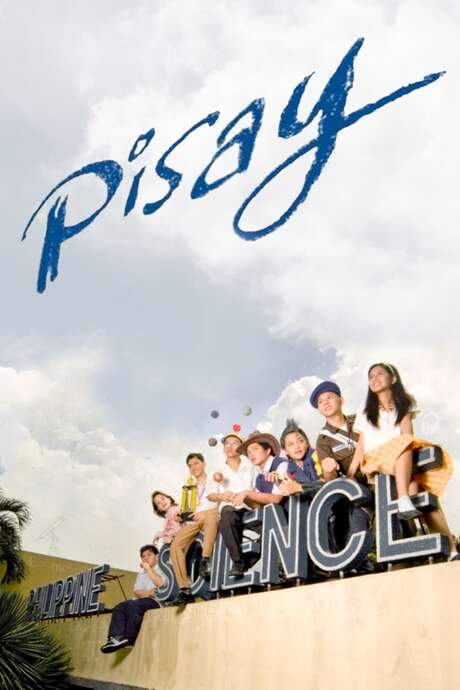
Pisay
Year: 2007
Runtime: 118 mins
Language: Tagalog
Director: Auraeus Solito
Set against the final years of Martial Law under Marcos, the film follows six scholars of the Philippine Science High School as they pursue their dreams. It tracks a freshman from 1982 through 1986, showing how the oppressive political climate cannot extinguish their ambition.
Warning: spoilers below!
Haven’t seen Pisay yet? This summary contains major spoilers. Bookmark the page, watch the movie, and come back for the full breakdown. If you're ready, scroll on and relive the story!
Pisay (2007) – Full Plot Summary & Ending Explained
Read the complete plot breakdown of Pisay (2007), including all key story events, major twists, and the ending explained in detail. Discover what really happened—and what it all means.
The film unfolds as a tapestry of lives from the Philippine Science High School’s 1986 batch, weaving together the hopes, tensions, and small triumphs of students and their faculty during the late Marcos era. At the center of the freshman year is Rom [Gammy Lopez], a working-class student who is late to join the school and quickly finds himself navigating his growing romance with Wena [Annicka Dolonius]. Their relationship collides with the school’s strict policy on student romances and the concern that such distractions might hurt grades, a conflict voiced by Mrs. Casas [Eugene Domingo], a teacher whose authority underscores the tension between youthful longing and institutional rules. The pressure culminates in a charged moment when Rom forcibly kisses Wena, a scene that leads Wena to end the relationship and return the memorabilia they shared, signaling a painful but defining separation as they move forward on separate paths.
In sophomore year, Mateo [Carl John Barrameda] wrestles with geometry and dormitory bullying while the country mourns the assassination of Ninoy Aquino. The atmosphere of national upheaval seeps into the classroom, and Mateo opens up about a fading passion for study as his final exam looms. His teacher’s belief in his effort gives him a glimmer of purpose, even as he ultimately fails the final and is expelled. Yet the final turn comes with a quiet vindication: the geometry teacher helps him understand the bell curve and reminds him that he did his best despite his personal struggles. In a last act of resistance, Mateo sabotages a bully’s lab experiment, a moment that embodies the blend of personal hurt and rebellious energy that characterizes the period.
Liway [Shayne Fajutagana], a bold voice with sharp political insight, commands the junior-year narrative with her wit and ideals. She excels in humanities and politics but struggles with chemistry, and she forms a bond with Andy [Jonathan Neri] over a chemistry project that blossoms into romance. Liway becomes a outspoken critic of plans to split classes by academic performance, clashing with Ms. Casas over school amenities and budgets. The political climate tightens when Liway’s family faces persecution, forcing her to flee to the Netherlands, leaving Andy to present their project alone. A postcard from Liway arrives later, a bittersweet reminder of the distance that politics can impose on personal connections.
Senior year brings together the school’s theatre-leaning faculty and students as Mr. G [Arnold Reyes] and Ms. Fanny [Rowena Basco] guide Euri [EJ Jallorina] in making plays that speak to the era’s crisis. Euri’s talent for drama inspires him to challenge the PSHS restrictions on college choices, choosing Theatre Arts over a science-focused path and reflecting a broader push to follow passion in the face of conformity. The relationship between art and politics resonates throughout the year, revealing how creative expression becomes a form of resistance and personal truth.
Across these years, Minggoy [Elijah Castillo] remains the constant thread—the boy obsessed with astronomy who waits for Halley’s Comet and grows closer to the other main characters while serving as a bridge between their stories. His health darkens as senior year unfolds, and he suffers a serious illness that prevents him from attending graduation, a poignant counterbalance to the students’ graduation excitement.
When the People Power Revolution erupts, Daki [Alfred Labatos] becomes a catalyst for collective action, urging his classmates to join the momentous changes taking shape outside the school walls. Mrs. Casas confronts her fears about disappearances during martial law and is granted leave to finish her dissertation, a quiet but powerful moment of personal resolve. On the eve of graduation, Wena tells Rom that she will move to the United States with her family, and Rom jokingly asks her to be his partner at the graduation ball, a tender wish against the broader currents of history.
In a scene that ties personal growth to larger historical events, Mateo returns to PSHS for a visit and is welcomed by his old geometry teacher, signaling a circle of return and reconciliation despite the campus’s upheavals. The celebrations culminate with Minggoy’s grandmother sharing a lineage link—born in the same year Halley’s Comet last appeared (1910)—and a moment of shared wonder as they look up at the Moon through Minggoy’s telescope. The film closes with a quiet, aching beauty: the students are called one by one by their teachers to the stage, but Minggoy’s chair remains empty, a visual poem about friendship, loss, and the enduring pull of memory.
Throughout, the ensemble cast grounds the story in rich, intimate portraits of ambition, love, and resilience. The characters’ arcs—Rom’s tentative romance, Mateo’s intellectual and emotional struggles, Liway’s political awakening and exile, Euri’s artistic leap, and Minggoy’s quiet science-driven optimism—combine with the political upheaval to paint a nuanced, life-sized portrait of youth under an era of change. The film never sermonizes; instead, it invites reflection on how a single school year can encapsulate a nation’s tensions and a generation’s hopes, leaving viewers with a sense of both closure and the unfinished business of growing up in a time when the world outside the classroom was itself in flux.
Last Updated: October 09, 2025 at 15:10
Unlock the Full Story of Pisay
Don't stop at just watching — explore Pisay in full detail. From the complete plot summary and scene-by-scene timeline to character breakdowns, thematic analysis, and a deep dive into the ending — every page helps you truly understand what Pisay is all about. Plus, discover what's next after the movie.
Pisay Timeline
Track the full timeline of Pisay with every major event arranged chronologically. Perfect for decoding non-linear storytelling, flashbacks, or parallel narratives with a clear scene-by-scene breakdown.

Characters, Settings & Themes in Pisay
Discover the characters, locations, and core themes that shape Pisay. Get insights into symbolic elements, setting significance, and deeper narrative meaning — ideal for thematic analysis and movie breakdowns.

Similar Movies to Pisay
Discover movies like Pisay that share similar genres, themes, and storytelling elements. Whether you’re drawn to the atmosphere, character arcs, or plot structure, these curated recommendations will help you explore more films you’ll love.
Explore More About Movie Pisay
Pisay (2007) Scene-by-Scene Movie Timeline
Pisay (2007) Movie Characters, Themes & Settings
Pisay (2007) Spoiler-Free Summary & Key Flow
Movies Like Pisay – Similar Titles You’ll Enjoy
Pahokee (2020) Spoiler-Packed Plot Recap
Koboy Kampus (2019) Story Summary & Characters
The 70s (2002) Detailed Story Recap
Lumpia (2003) Story Summary & Characters
A Rustling of Leaves: Inside the Philippine Revolution (1988) Story Summary & Characters
A Dangerous Life (1000) Plot Summary & Ending Explained
Katips (2021) Story Summary & Characters
Pusoy (2022) Full Summary & Key Details
Asedillo (1971) Film Overview & Timeline
Eskapo (1995) Film Overview & Timeline
Tisoy! (1977) Complete Plot Breakdown
Batas Militar (1997) Full Movie Breakdown
Maid in Malacañang (2022) Movie Recap & Themes
Ako Si Ninoy (2023) Detailed Story Recap
Bahay Kubo: A Pinoy Mano Po! (2007) Film Overview & Timeline









